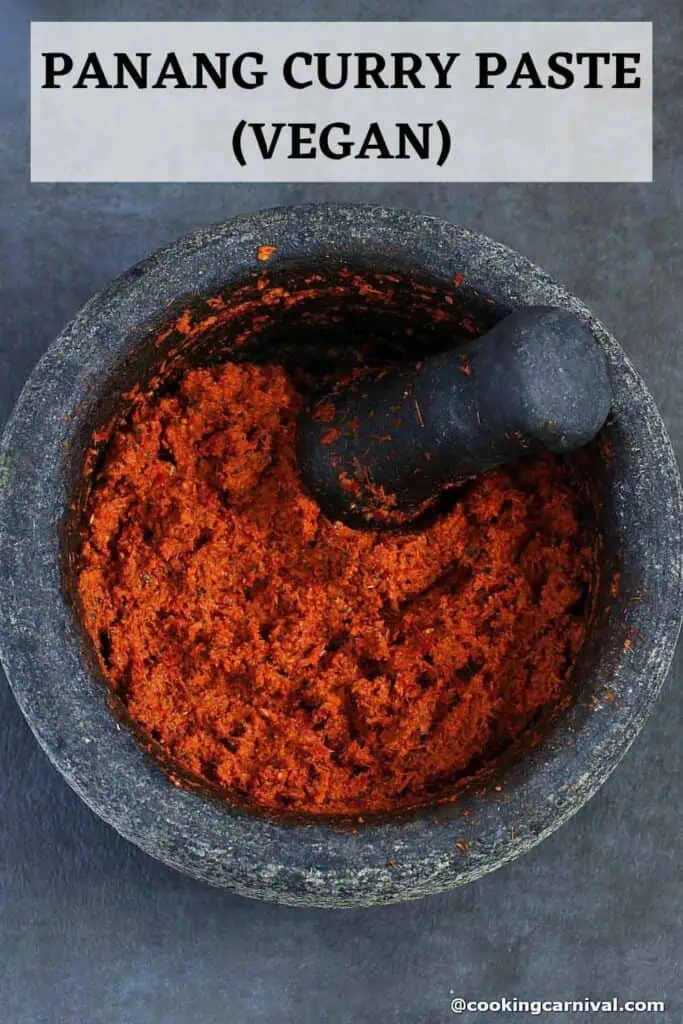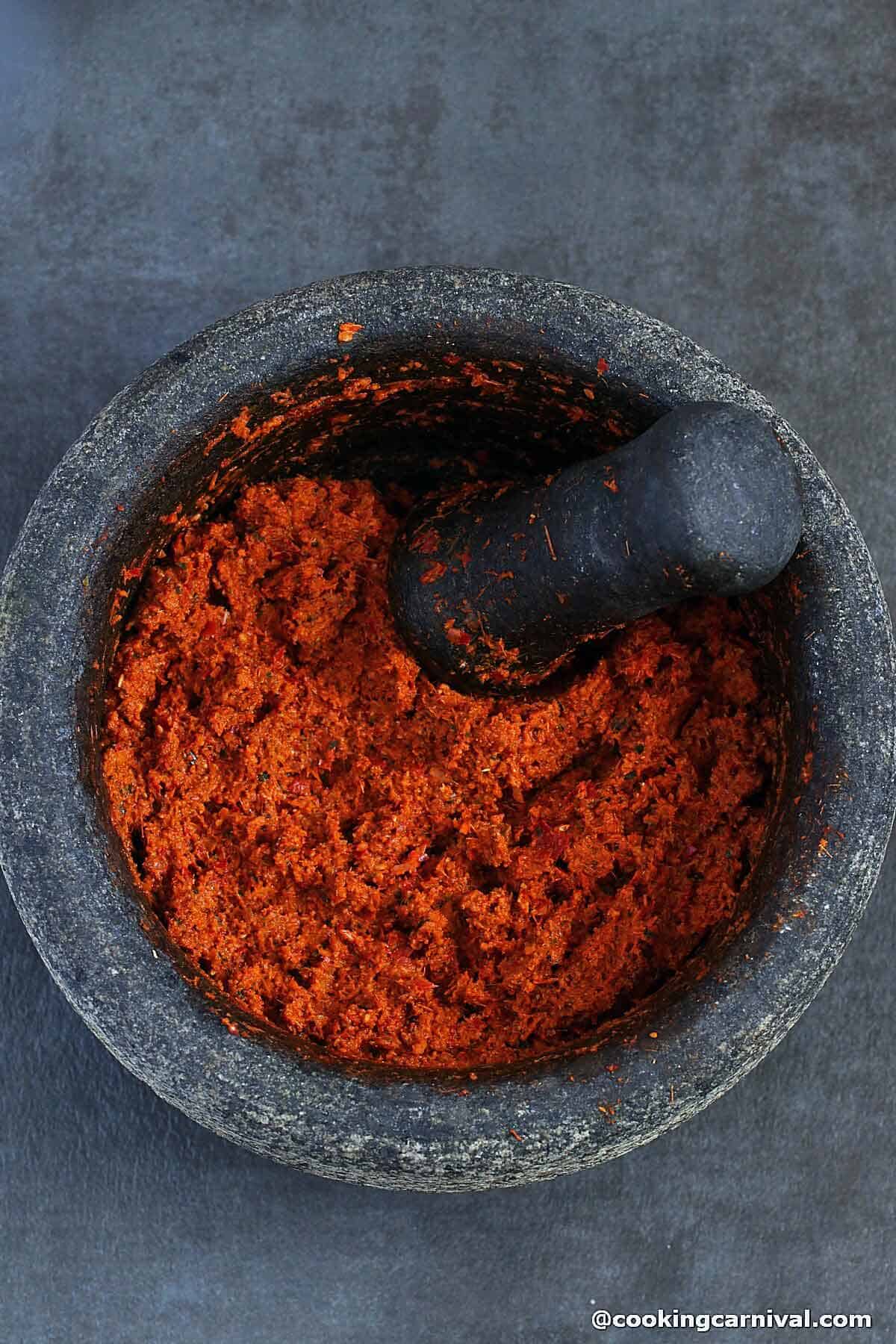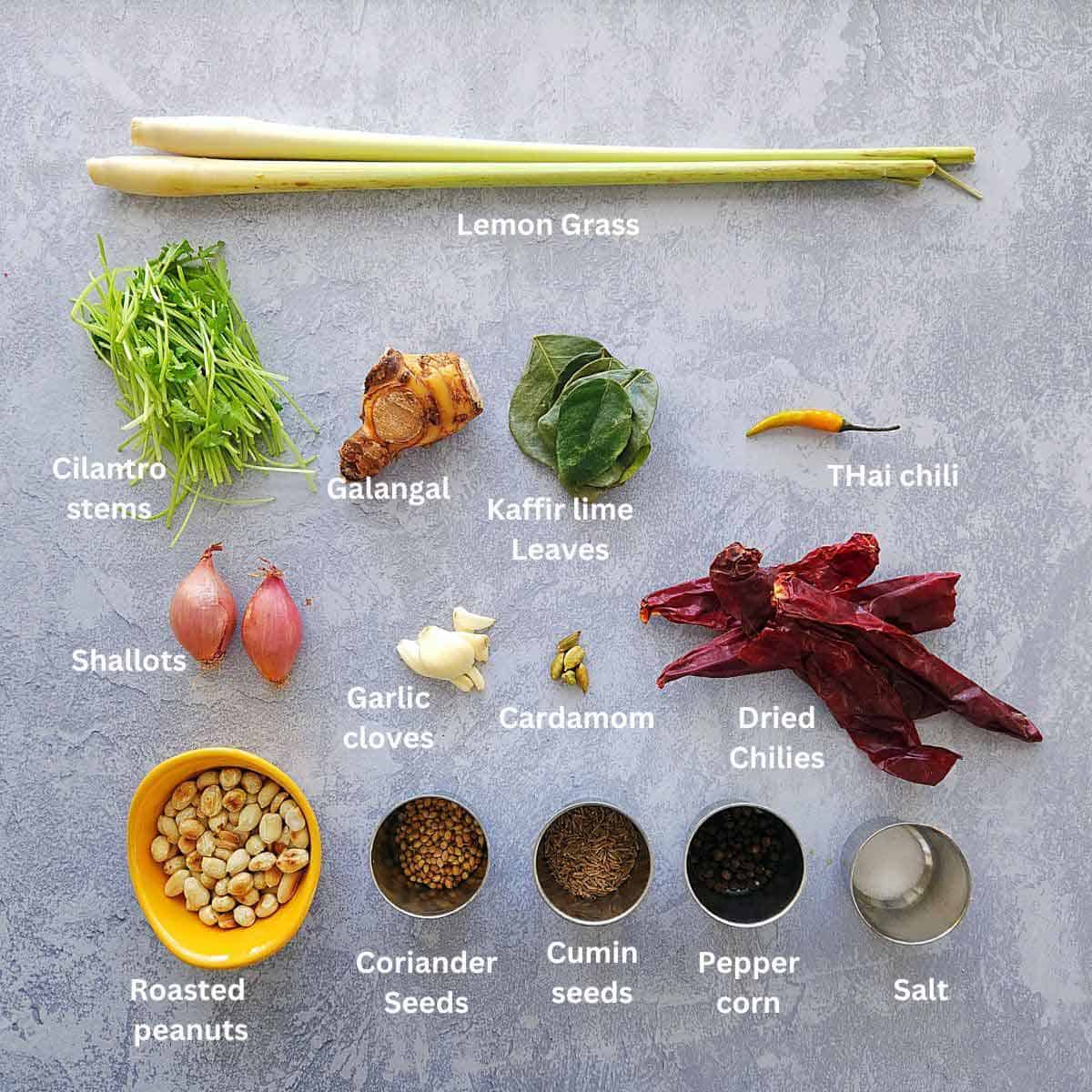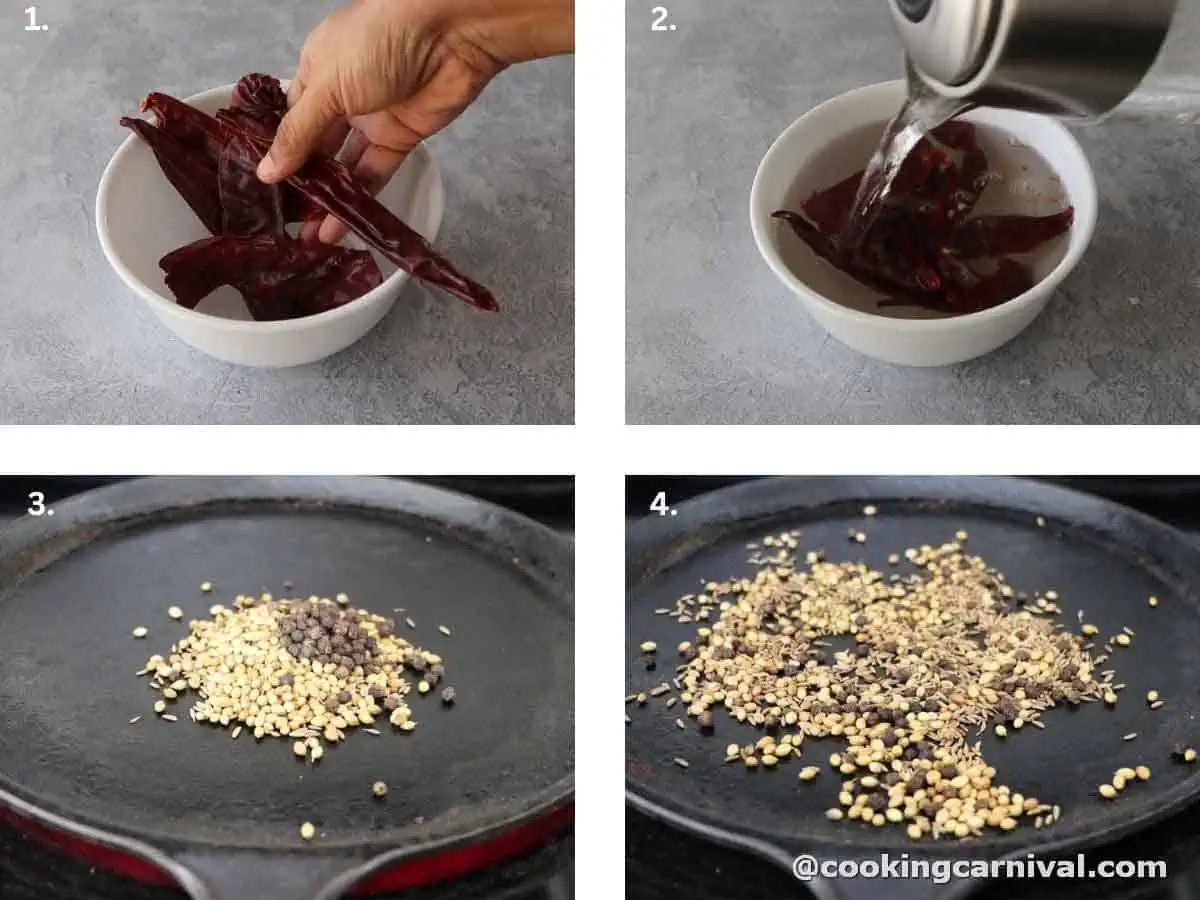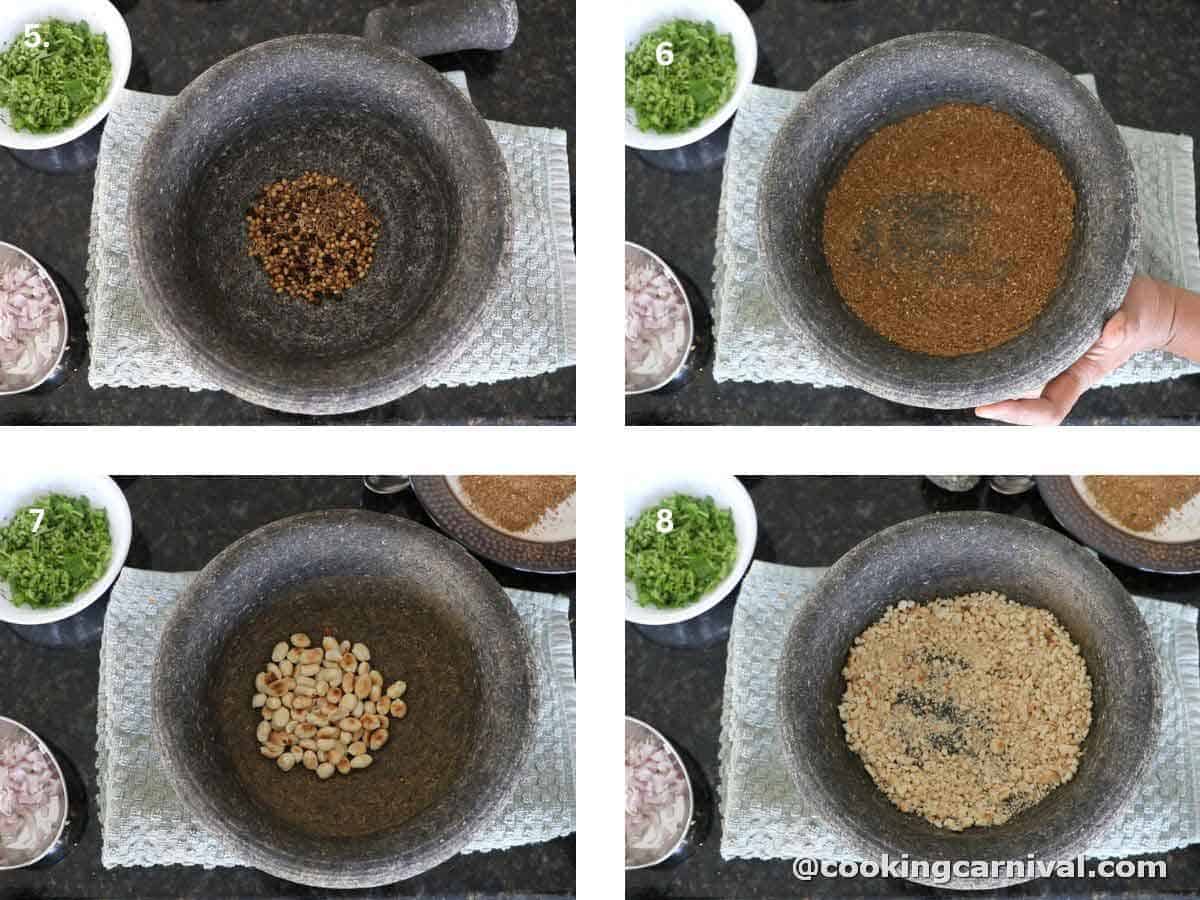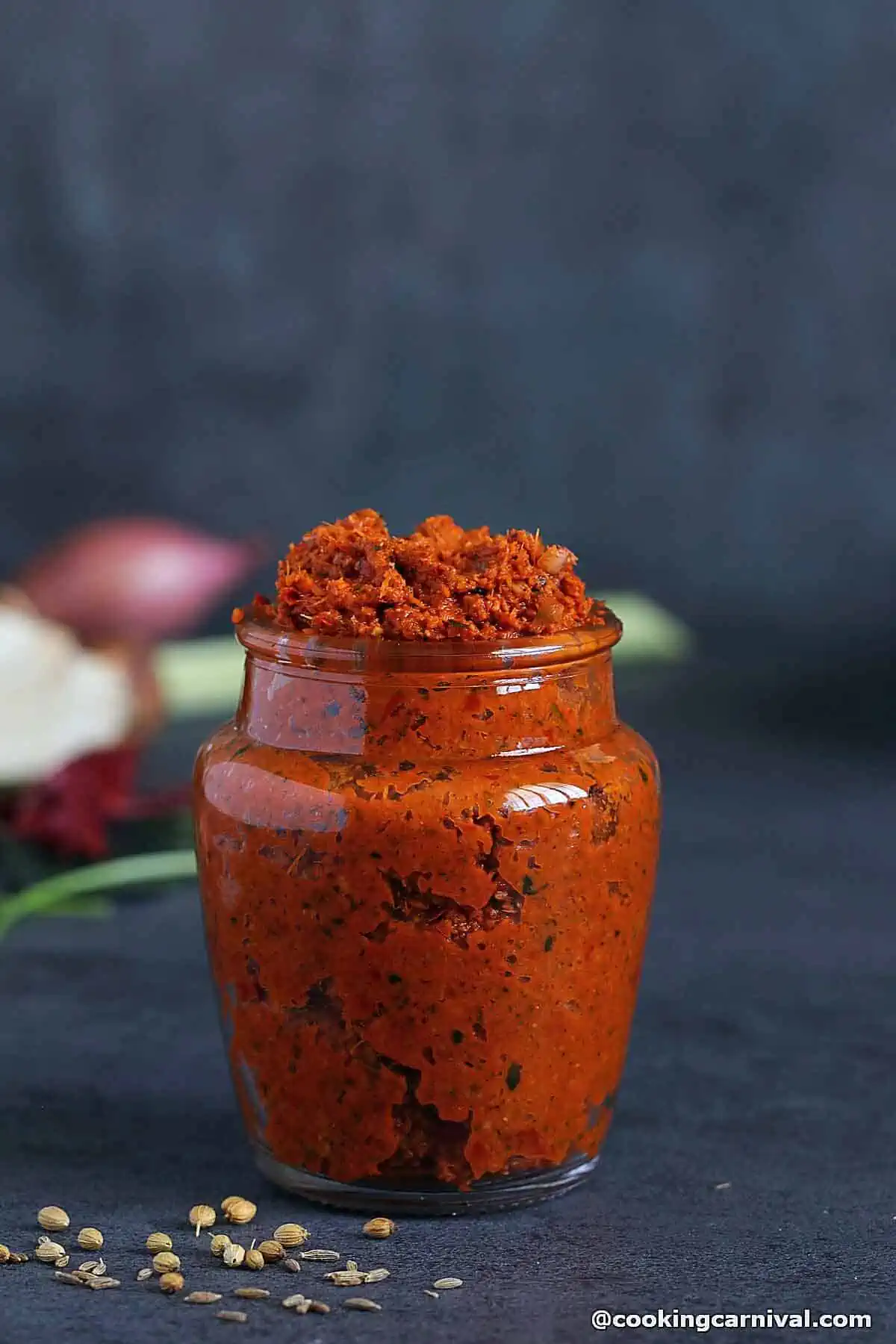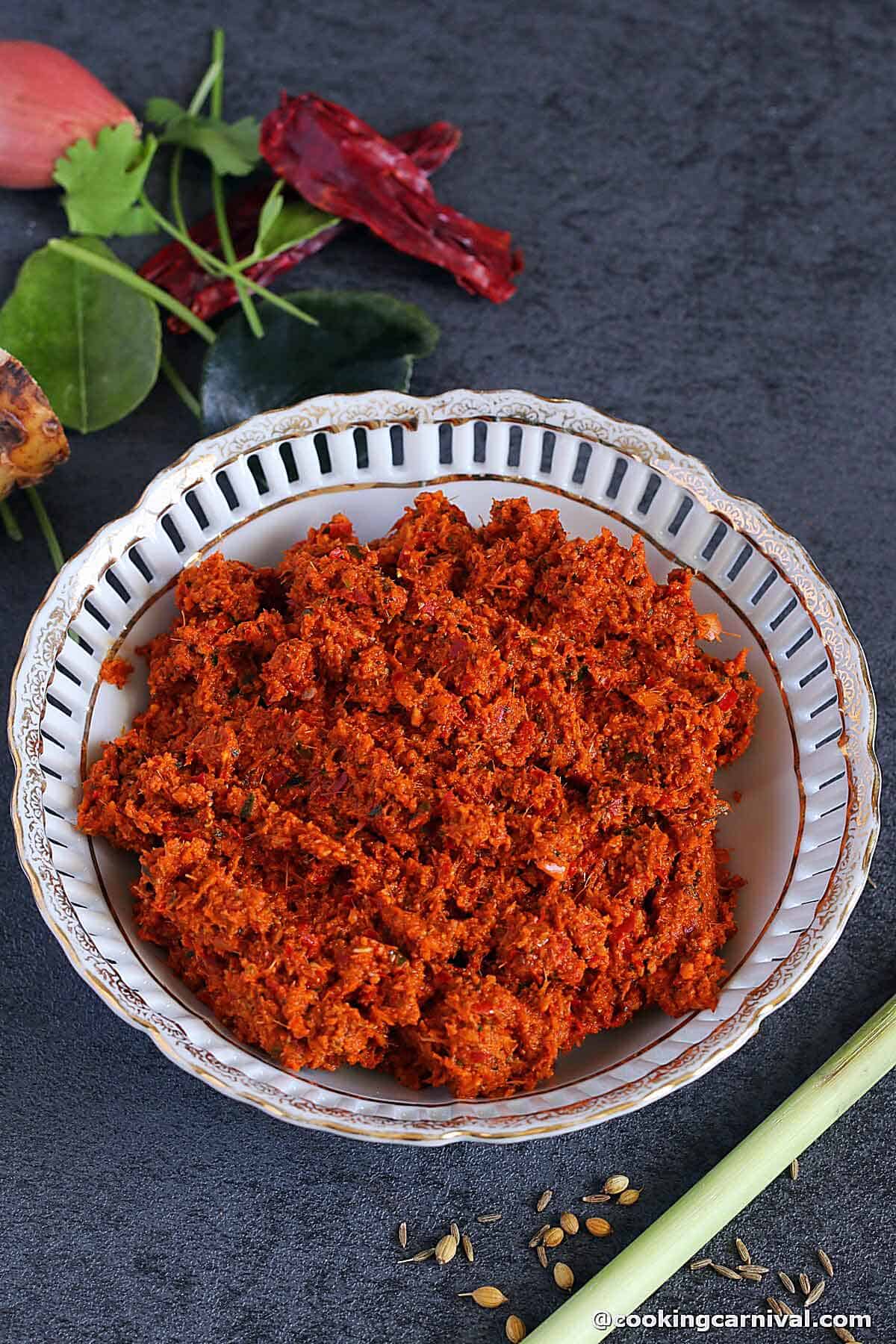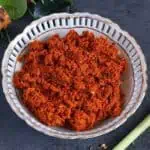Learn how to make this authentic Panang Curry Paste recipe from scratch! Full of fragrant herbs and warm toasted spices, this paste is way better than store-bought. Have you had panang curry yet? Panang is one of the most well-known curries in Thai cuisine, typically found in the central and southern regions of the country. As with other types of gaeng (curry), the backbone of flavor for the dish comes from an aromatic curry paste. So, today’s recipe of Panang curry paste is a must-make recipe if you want to make the best Panang curry. Panang curry paste is a type of Thai curry paste made from a combination of dry spices, dried red chilies, fresh herbs, and other ingredients such as kaffir lime leaves, lemongrass, and galangal. Shrimp paste is also one of the ingredients used to make this curry paste. But today, we are making vegan Panang curry paste without shrimp. Panang curry paste is known for its sweet, salty, and mild spice level, much like red curry paste. Plus, they have the delicious addition of roasted peanuts to give the nutty flavors. Store-bought Panang curry pastes often don’t include peanuts for allergy reasons, but peanuts are a crucial ingredient, so as long as you don’t have peanut allergies, they must go in!
Why do we make Panang Curry paste at home?
It’s so simple and easy to make.You can control what you put in.Natural ingredients, fresh herbs, and spices make all the difference.It is made without any preservatives.You can control the spice.You can make up a big batch and store it for later use.
Panang Curry Paste Ingredients
(Measurement is given in the recipe card. Please scroll down the page)
Chili Peppers: Traditionally, Dried spur chilies are used to make this curry, but it’s hard to find, so used guajillo chilies. You can use any mild dried chilies, like Kashmiri dried chilies. The dried chilies are stemmed, the seeds removed and soaked in water until softened and used in the recipe.Fresh red chili – I used fresh red chili to give a little spice to the curry paste. You can skip it too.Lemongrass: You can find whole and chopped lemongrass at most Asian and local supermarkets. Take only ⅓ part (from the bottom) of the lemongrass. Cilantro stems – Traditionally, fresh coriander roots are used in this recipe. Unfortunately, I couldn’t find them, so I have used the stems. Make sure to give them a good wash before chopping!Kaffir Lime leaves – Fresh leaves are best for this recipe. However, you can also find them dried, frozen, or in a jar at Asian and local supermarkets. Sub with the zest of one lime. They may be labeled as kaffir lime, makrut, or Thai lime leaves.Galangal – for their unique flavor and aroma. Try to find the youngest, as cutting is much easier and less fibrous. Find them fresh at your local Asian grocer. Sub with ginger, although the flavors won’t be the same.Shallots – to build flavor. They are readily available at most supermarkets—sub with regular red onion.Garlic: Use fresh garlic instead of minced, adding flavor to the final curry paste.Coriander Seeds & Cumin Seeds – for spice and aromaPeanuts – giving the essential nutty Panang curry taste. Use unsalted crushed peanutsWhole Spices – Coriander, cumin, peppercorns, all lightly toasted.Cardamom pods – for spice and aroma
Step-by-step process
Remove the stem and the seeds from the dried chilies. (Image 1)Take them into a big bowl. Add hot boiling water to the chilies and let them soak for 30 minutes to soften. Drain and squeeze out all the liquid. (Image 2)Now chop them finely and set aside.In a medium frying pan, gently toast cumin seeds, coriander seeds, and peppercorn over low to medium heat for 1-2 minutes. Make sure not to burn the spices. (Image 3 and 4)
Place all the toasted spices and cardamom in a stone mortar and pestle, and grind into a fine powder. Remove from mortar and pestle and set aside. (image 5 and 6)Note: You can speed things up and use a spice grinder here, but a mortar will give you the best result.Now take roasted peanuts and crush them coarsely. Take it out in a bowl and keep it aside.(Image 7 and 8)
Add the lemongrass, galangal, and kaffir lime leaves. Crush them a bit. (Image 9)Now and soaked dried chilies and pound them for 5 minutes. (image 10)Add coriander stems, shallots, red thai chili, and garlic. Pound them until very fine paste forms. (image 11 and12)Note: You can use a food processor or blender here to speed things up.Use a spoon to scrape the ingredients from the side of the mortar and pestle down to the center as you go.Add salt and crushed peanuts and continue to pound until you obtain a paste. (image 13)Finely add spice powder and mix everything really well. (Image 14)
Your homemade vegan panang curry paste is ready. Please put it in a storage container in the fridge until you are prepared to use it.It can be refrigerated in an airtight container for up to 1 week. This Panang curry paste lasts up to 6 months in the freezer.
More Thai Recipes
Thai Peanut CurryPeanut noodlePineapple fried rice
Warm regards, You can also FOLLOW me on FACEBOOK, INSTAGRAM, and PINTEREST for more fabulous recipes and updates. Subscribe to our YouTube Channel for tasty and easy video recipes. Dhwani.
